Workshop: Cleaning and waterproofing the sprayhood and tarpaulin correctly
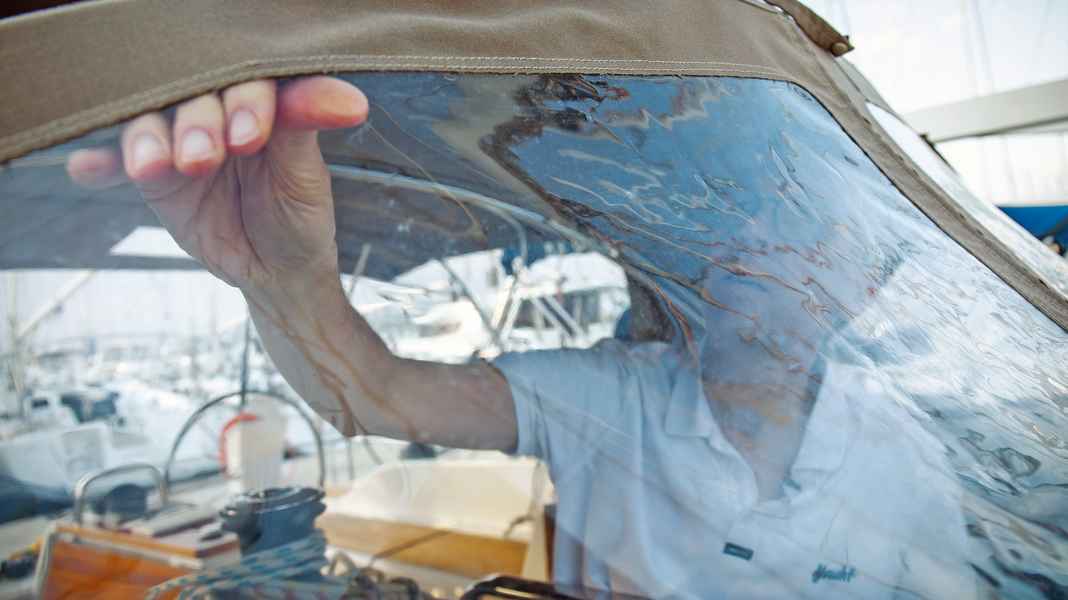
After just a few years, ugly signs of wear can appear on the sprayhood: green seams and stains on the outside, especially in the handle area on the rear edge, plus spak on the inside. The black dots increase more and more. Unfortunately, green soap and scrubbing are not enough; neither algae nor fungus are impressed.
The boom tarpaulin is often in an even worse state, with algae spreading there too. What's more, the tarpaulin is quickly no longer waterproof; instead, the fabric soaks through when it rains and dries correspondingly slowly. This is not only annoying when stowing away, but is also one of the reasons for the green film. Above all, however, the permeable cover no longer protects the sail properly, increasing the risk of spak and mould.
Sprayhood cleaning by a professional
So what to do? One option is professional cleaning by a sail or tarpaulin maker. As a rule, they will pass the canopy on to a specialised dry cleaner. The price depends on the weight of the tarpaulin. A sprayhood for a ten-metre yacht weighs around 3.5 kilograms. Professional cleaning, for example at Zonklaar, would cost around 230 euros. Another 230 euros would be due for the boom tarpaulin. Including transport there and back, however, it can take four weeks before the weather protection is back on board. Self-initiative promises quicker success.
Clean sprayhood and tarpaulin yourself
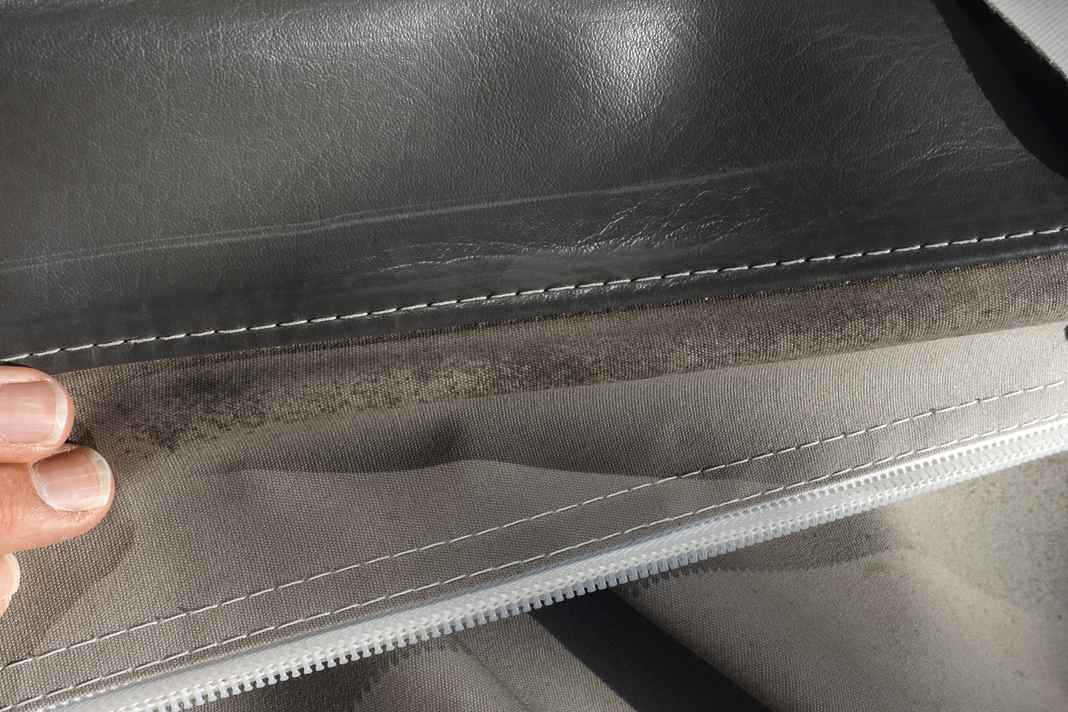





Combat mould stains
The intrepid tackle algae and spores with diluted sanitiser. The sodium hypochlorite it contains makes short work of organic soiling. This is not really a problem with synthetic fibre cloths, but the effect is difficult to control and cotton covered threads are often used for the seams. The natural fibre swells when wet and thus ensures rainproof seams. However, the aggressive chlorine compound damages the cotton and significantly shortens its service life. It is therefore better to use special tarpaulin cleaners, such as those available from the MTS mould service or Ultramar are available from Holland. When used correctly, the risk of excessive seam wear is significantly lower. Both suppliers have been on the market for decades and their products have been tried and tested thousands of times.
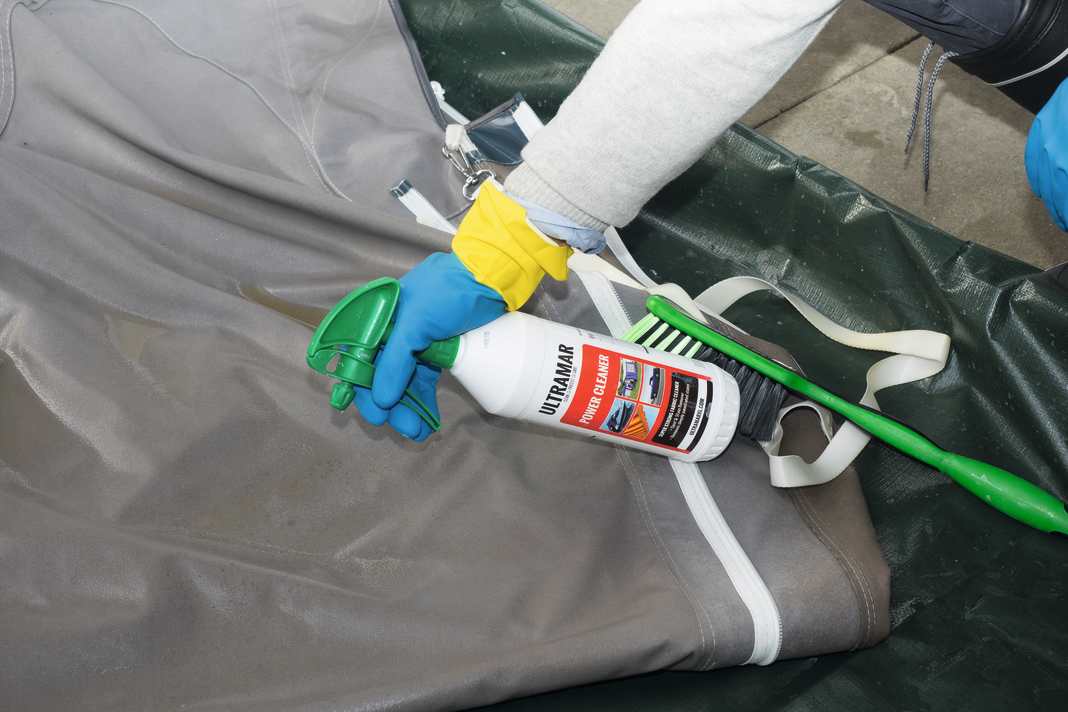




Tarpaulin fabrics are generally dyed to be UV-resistant, so there is no need to worry too much about fading. You only need to be careful with light beige cotton blend fabrics.
According to Gerhard Macht from the mould protection service, ferrous deposits can form in the fabric during the production process. This is why they tend to discolour when using the mould stain remover Tentoclean. He therefore recommends pre-treatment with his fibre protection agent. According to him, other colours or pure synthetic fibre cloths are not critical.
Macht also cites reasons for the increasing algae and mould stain problems: "The stricter biocide guidelines prevent the effective finishing of the fabrics." If the storage conditions are not ideal, the material already starts to develop mould at the Persenningbauer Spak. Mould fungi feel at home from 60 percent moisture - a level that is quickly reached with tarpaulins and sprayhoods in spring and late summer. The strong temperature fluctuations then cause a lot of condensation.
Impregnation is important
The fact that the tarpaulin becomes waterproof thanks to good waterproofing is almost a side effect. It is at least as important to prevent the fabric from becoming damp so that it can dry quickly. The water protection also has a grease-repellent effect. This makes the fabric easier to clean, and algae and mould find fewer nutrients.
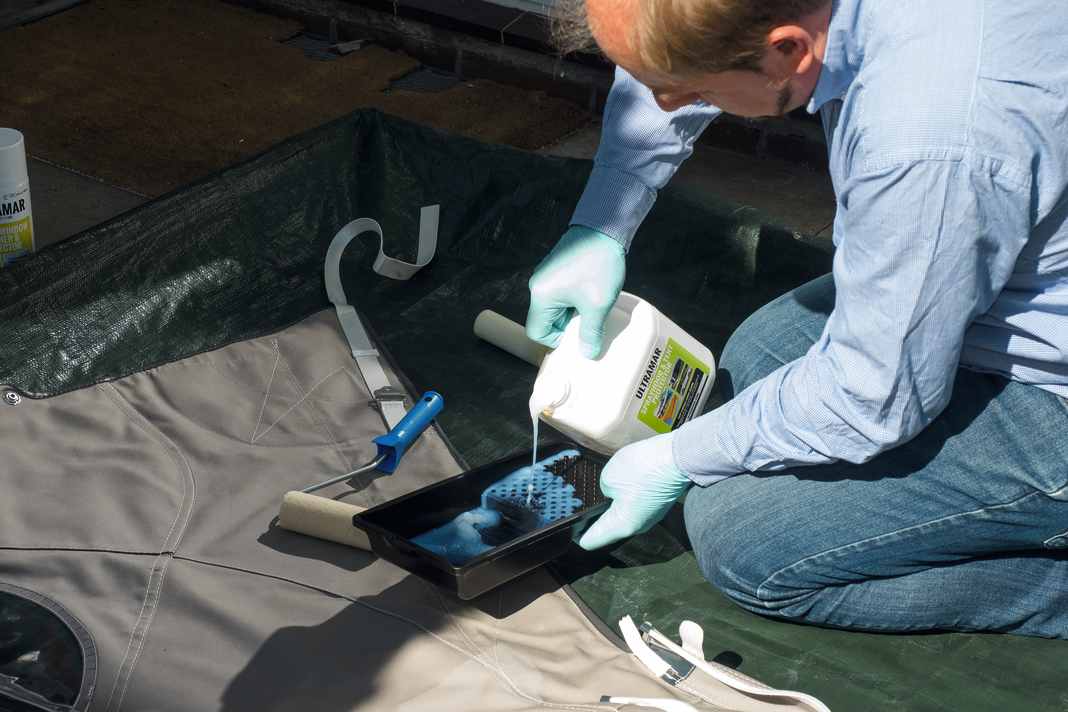





High-quality impregnation can also withstand washing without any problems. However, the mechanical stress caused by folding the fabric, hail and heavy rain will wear it out, so the protection must be renewed every two to three years. The tarpaulin should lie flat and always be treated on both sides. It is also crucial for success that there are no cleaning agent residues in the fabric and that the specified drying times are observed.
Maintain the discs too
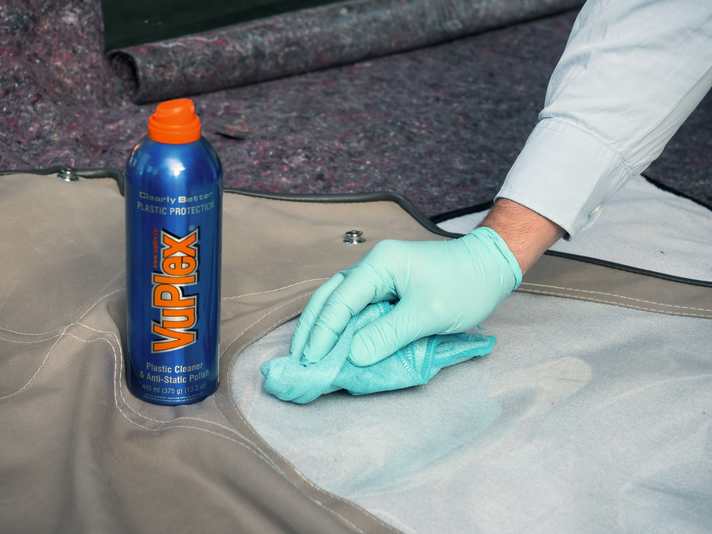
Note the time required
Although the whole process takes less than four weeks, the time required should not be underestimated. The necessary drying times between pre-cleaning and algae control and before impregnation alone will keep you busy for a good two days. The cleaning agents required for the sprayhood and tarpaulin cost around 100 euros.

